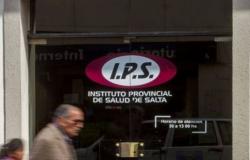The whistles resonate even louder than the horns in the downtown area. The municipal traffic agents give instructions, gesture and sometimes even seem to implore that the people of Tucumán respect the demarcation of the exclusive bus lane. “As my mother-in-law says: there is no worse fight than the one that does not happen,” an inspector assures LA GACETA, while instructing the drivers who circulate on Santiago del Estero street regarding the new guidelines aimed at ordering the vehicular chaos in the city.
While the Municipality advances with this pilot test, framed in the initial phase of the Comprehensive Urban Mobility Plan (PIMU), traffic agents are dedicated to the intense task of explaining how the yellow lines painted on the strategic arteries of the Capital work.
About 200 blocks will be reached by this modality. And although there is no confirmed date for its definitive implementation, prohibitions on parking on the marked lanes already apply, and soon the warnings issued by the inspectors will become “exemplary fines and sanctions” issued by the Misdemeanor courts, they anticipated in the headquarters of 9 de Julio and Lavalle.
For now, however, between honks and whistles, questions from drivers still persist. Below are some of the main doubts that arise for traffic agents in charge of ensuring that exclusive lanes are respected.
1) What about right turns on streets with dedicated lanes?
They will be allowed on all arteries, with the exception of the Santiago del Estero intersection and two streets running south-north: Junín and Muñecas. The Secretary of Urban Mobility, Benjamin Nieva, explained to LA GACETA that one of the next stages in the PIMU includes signage – arrows on the pavement and signs on the sidewalks – to indicate the places where you can turn right. In any case, a key aspect will be to do it with caution; That is, put the wink in enough time and take into account that the priority will be for the public transportation service.
2) What are parents told when they leave school?
In a tour that this newspaper took through the downtown area, the inspectors agreed that this is one of the most recurring queries. And the answer points to one of the key aspects of the new system: the idea is that no one parks on the exclusive lanes. So, what traffic agents request is that parents use the closest perpendicular arteries. Beyond this, exceptions are contemplated. “The pick-up and drop-off of passengers is allowed, both to drop off students and a sick patient from a sanatorium, for example. What you can’t do is leave the car ‘stuck’ with the beacons and leave,” Nieva said.
LA GACETA/PHOTO BY ANALÍA JARAMILLO
3) What will happen to the spaces reserved for parking on public streets?
Where the exclusive lane is marked, there is no reserved parking. “The circulation of public transport is prioritized,” insisted the Secretary of Urban Mobility.
4) Can motorcycles and other smaller vehicles use the bus lane?
No. Users of motorcycles, bicycles and electric skateboards cannot circulate on that section of the street either. “They can do it in the left lane, of course, complying with safety conditions, such as helmets, and respecting the National Traffic Law,” Nieva said. And she clarified that if these users prefer not to travel on a street that has an exclusive lane for buses, they can opt for another artery that does not have that limitation.
5) What will happen to waste containers?
The sector destined for public transport cannot be blocked, reiterated the Secretary of Urban Mobility. For this reason, waste containers are not permitted, nor are those intended for public works. “The lane must be absolutely clear. It can only be occupied for a few short seconds, in the cases contemplated for ascent and descent, but nothing more,” Nieva remarked.
6) Will taxi drivers be able to keep their stops in the demarcated sectors?
“Where officially authorized taxi ranks operate, there are no exclusive lanes for buses,” explained the Secretary of Urban Mobility. And he clarified that, in the case of corners where taxi drivers have set up informally, they must leave there. Beyond this, Nieva stated that the system provides for the possibility of drivers stopping for a few seconds to pick up or unload a passenger. “There was obviously thought about not restricting their freedom to work. It is something that was conveyed from Sutrappa when the details of the PIMU were explained to them,” he added.
7) What will happen to loading and unloading trucks?
It is another of the recurring queries that traffic agents receive. And, again, the key is not to occupy the exclusive bus lane, nor to delay traffic. In addition to having specific permits and schedules, delivery vehicles must avoid exclusive lanes, and are recommended to opt for the closest perpendicular arteries, especially in cases where it is necessary to unload a significant volume of cargo and require several minutes of parking.
8) Are improvements planned at bus stops?
Nieva explained that, within the framework of the Comprehensive Urban Mobility Plan, an improvement in this aspect is contemplated. “We have an ambitious shelter plan, with the idea of protecting the user from the rain and sun,” she anticipated. In any case, this is something that will be observed later. In parallel, modifying some routes to decompress some arteries is also being analyzed (for example, more than a dozen lines circulate through Santiago del Estero), a point that is subject to dialogue between the municipality and Aetat.
9) When will the fines begin to be applied?
There is no official date, and the inspectors still limit themselves to warning and asking drivers to respect the regulations given for the exclusive lanes. Regarding the possible amounts of the sanctions, Nieva explained that they will be determined by the Misdemeanors judge, and that the penalties could not only affect private vehicles that park in the prohibited area, but also, for example, the drivers of buses that invade the left-hand lane.
10) Is the idea of bus-only streets ruled out?
Yes. On the one hand, the municipality considers that it is not viable to allocate an entire artery exclusively to a single type of vehicle. And, on the other hand, the execution of the works to implement the exclusive lanes – including thermoplastic painting and dividing studs – has already exceeded 70% progress.






